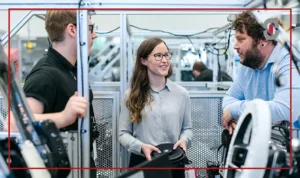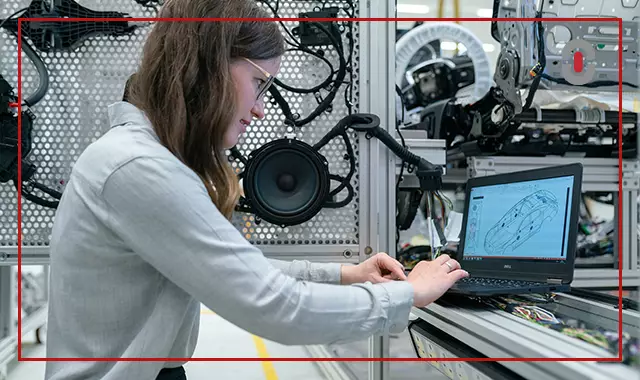AI Overview
| Category | Summary |
| Topic | How Asian language expertise helps automakers accelerate time‑to‑market |
| Purpose | To show how integrating localization early in the workflow enables global automotive brands to launch faster and stay competitive |
| Key Insight | Speed in the automotive industry is not just about engineering and design, but also about delivering accurate, compliant, and well‑formatted multilingual content across Asian markets |
| Best Use Case | Automotive companies preparing global launches who need manuals, infotainment systems, and compliance documents localized in parallel with product development |
| Risk Warning | Late or poor‑quality localization can cause certification delays, compliance risks, user frustration, and loss of market share |
| Pro Tip | Work with partners that combine translation, desktop publishing, and workflow integration to minimize revisions and ensure synchronized multilingual rollouts |
Introduction: Speed Defines Market Leaders
For global automotive brands, the launch of a new vehicle isn’t just a product reveal—it’s a race against time. Every new model must reach customers in multiple countries, often simultaneously, and any delay in one market can disrupt the entire rollout.
While engineering, design, and compliance teams push at full speed, localization often lags behind. Translating car manuals, infotainment systems, compliance documents, and marketing content into dozens of languages—especially Asian languages with complex scripts—becomes a bottleneck. In today’s hyper-competitive automotive industry, speed to market equals competitive advantage. The brands that win are those that treat automotive translation and Asian language localization as strategic priorities, not afterthoughts.
This is where specialized language partners like 1-StopAsia come in—helping automotive brands streamline workflows, accelerate translations, and ensure multilingual rollouts are seamless.
The Time-to-Market Challenge
Automotive launches are uniquely complex. A new vehicle model does not just ship to one country—it must debut across regions with very different languages, regulations, and consumer expectations.
- Multiple markets, one launch window. Automakers coordinate simultaneous releases in Asia, Europe, and the Americas. Any localization delays risk uneven market rollouts and fragmented brand experiences. These staggered or incomplete launches can dilute the impact of global marketing campaigns, and give competitors a window to capture market share before your product is even available.
- Regulatory and compliance requirements. In Asia, safety warnings, warranty terms, and compliance documents must be perfectly localized—or they risk costly delays in certification. Beyond delaying approval, inaccurate translations can trigger recalls, legal disputes, or reputational damage—problems far more expensive than getting localization right from the start.
- High customer expectations. Buyers expect fully localized user experiences—from infotainment menus in Korean to safety manuals in Thai. Any oversight reflects poorly on the brand. In markets where consumers compare vehicles feature by feature, poor translation can make advanced technologies feel less intuitive and erode the perception of quality.
The result? If localization isn’t integrated into the product lifecycle, automotive brands face late launches, compliance headaches, and lost sales opportunities.
Workflow Integration for Automotive Localization
The solution is not simply translating faster—it’s integrating localization into the automotive workflow from the start.
Forward-thinking automakers are aligning translation with design, engineering, and marketing cycles. By localizing in parallel, instead of waiting until the end, brands ensure that manuals, interfaces, and campaigns are ready when vehicles hit the market.
- Translation management systems (TMS) linked with design tools. For example, integrating localization workflows with CAD or documentation systems reduces manual file handling and ensures updates move seamlessly across languages. This connection means that even minor engineering changes—like a new safety feature—are automatically reflected in all language versions, preventing last-minute inconsistencies.
- Parallel localization. Instead of waiting for a final manual draft, translations begin as soon as engineering documentation is stable enough to share. This overlapping workflow reduces idle time and ensures translation teams stay aligned with ongoing revisions, cutting weeks off the final delivery schedule.
- Marketing and UI in sync. Infotainment UIs, websites, and marketing campaigns are localized in tandem, ensuring consistency across all touchpoints. When messages and interfaces are harmonized across languages, customers experience a unified brand identity from the showroom floor to the driver’s seat.
So, when localization is built into the workflow, it ceases to be a last-minute hurdle and becomes an accelerator for faster time-to-market.
Translation + DTP Efficiency: The Asian Language Advantage
Asia is one of the most lucrative markets for new vehicles—but it’s also one of the most complex linguistically. Translating into Chinese, Korean, Japanese, Thai, or Vietnamese brings unique challenges:
- Complex scripts and spacing. Asian languages often require different font handling, line breaks, and spacing adjustments that Western languages don’t. Without skilled DTP, even correct translations can appear clumsy or confusing on the page, undermining credibility.
- Text expansion and contraction. A phrase in English may take twice as much space in Korean or significantly less in Chinese, creating design headaches for manuals and user interfaces. Anticipating these differences early allows layout teams to design flexible templates that avoid costly redesigns later.
- Regulatory terminology. Safety and compliance terms vary across regions, requiring precise localization by linguists that are trained in automotive translation. Using experienced translators ensures critical information—like airbag warnings or brake instructions—is clear, accurate, and compliant with local regulations, reducing the risk of liability.
This is where translation plus desktop publishing (DTP) expertise becomes essential. A partner like 1-StopAsia combines linguistic accuracy with technical formatting, ensuring:
- Manuals, quick-start guides, and compliance docs look professional and accurate in every language.
- Infotainment UIs remain intuitive and properly formatted across languages.
- Fewer back-and-forth revisions between translation, engineering, and design teams—saving weeks of time.
Efficient translation and DTP mean approvals happen faster, errors are minimized, and multilingual content is truly launch-ready.
Multilingual Rollout Success: Scaling Across Asia
A modern car launch often requires localization into 10, 15, or even 20 languages. Coordinating this scale demands a partner who can manage complexity without slowing down.

- Simultaneous delivery. With scalable workflows, translations for manuals, compliance docs, and infotainment systems are delivered across all target languages at the same time. This level of coordination ensures every market is ready for launch day, preserving the excitement and momentum of a global debut.
- Consistency across markets. Terminology databases and translation memories ensure that “brake assist” or “adaptive cruise control” is translated consistently in every language. Consistency not only improves user comprehension but also strengthens trust in the brand’s engineering precision across different markets.
- Local expertise. Asian language specialists understand not only linguistic nuances but also cultural expectations—helping brands connect authentically with customers. This cultural fluency can make the difference between a user interface that feels intuitive and one that frustrates local drivers.
For example, when a new SUV launches in Asia, the car manual translation, infotainment UI localization, and marketing campaigns must all align. A trusted Asian partner ensures this synchronization—so the brand experience feels seamless from Tokyo to Bangkok.
Conclusion: Winning with Speed and Precision
In the automotive industry, localization delays are no longer an option. Each day lost to translation bottlenecks risks late launches, compliance challenges, and competitive disadvantage.
By partnering with Asian language localization experts, automotive brands can accelerate their time-to-market, deliver consistent multilingual rollouts, and focus on what they do best: designing the next generation of vehicles.
1-StopAsia has decades of experience helping automakers localize faster and more efficiently across Asian markets. With integrated workflows, expert translation, and DTP solutions tailored to the automotive sector, we help brands launch new models on time—and ahead of the competition.
Ready to accelerate your next vehicle launch in Asia?
Contact 1-StopAsia today for an automotive localization consultation.
Download our guide on Asian automotive translation best practices.
Share this article on LinkedIn with #AutomotiveLocalization #AsianLanguages #FastLaunch.
